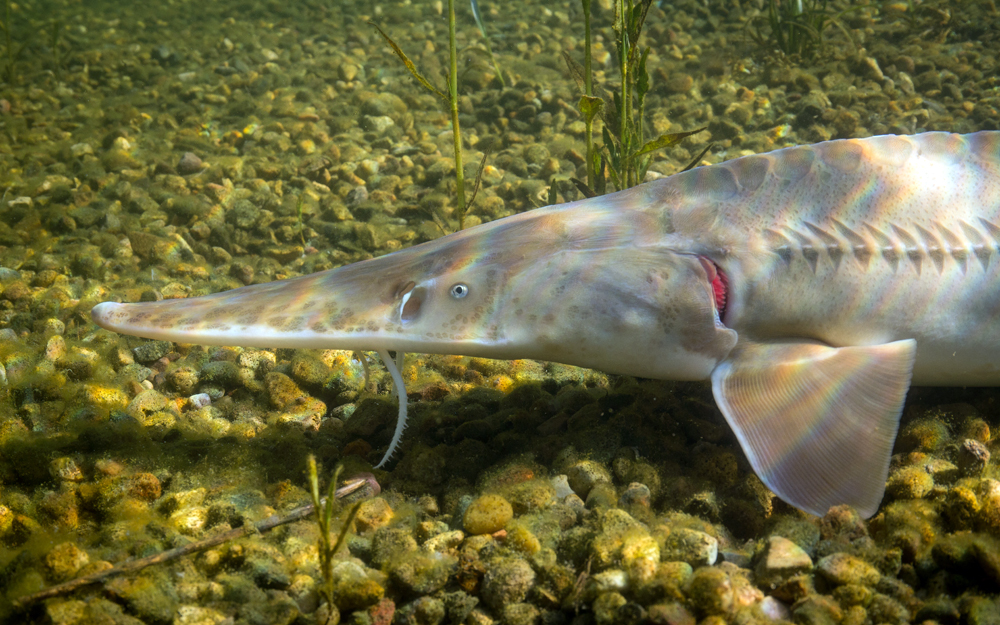Pallid sturgeon
(Scaphirhynchus albus)

Classification
General data
The pallid sturgeon (Scaphirhynchus albus) is an endangered species of ray-finned fish, endemic to the waters of Missouri and lower Mississippi river basins of the United States.
Named for its pale coloration, it is closely related to the relatively common shovelnose sturgeon (Scaphirhynchus platorynchus), but is much larger, averaging between 30 and 60 inches (76 and 152 cm) in length and 85 pounds (39 kg) in weight at maturity. The pallid sturgeon is one of the largest freshwater fish species in North America.
This species takes 15 years to mature and spawns infrequently, but can live up to a century. A member of the sturgeon family, Acipenseridae, which originated during the Cretaceous period 70 million years ago, the pallid sturgeon has changed little since then.
Although visually similar, the shovelnose sturgeon is much smaller and usually weighs no more than 5 pounds (2.3 kg).
Pallid sturgeon are much paler in coloration with grayish-white backs and sides, while shovelnose sturgeon are brown.
Pallid sturgeon turn whiter as they age and younger specimens are easily confused with adult shovelnose sturgeon since they are similar in color. Like the shovelnose sturgeon, their tails are heterocercal, with the top tail fin being longer than the bottom fin, though this is more pronounced in pallid sturgeon.
As with other sturgeon, pallid sturgeon lack the scales or bones found in more modern species of fish. Instead, they have cartilaginous skeletons with five rows of thick cartilage plates that extend along their sides, undersides, and backs, as well as over most of the head. These thick cartilage plates are covered by the skin and serve as protective armor. The bony cartilage also extends along the backside, from the dorsal fin to the tail..
The snout and head are longer than that of the shovelnose sturgeon. In both species, the mouth is located well back from the tip of the snout. Lacking teeth, they use their extendable mouths to suck up small fish, mollusks, and other food sources from river bottoms. Both species also have four barbels that descend from the snout near the front of the mouth. The barbels are believed to be sensory features to locate food sources. On pallid sturgeon, the two inner barbels are about half as long as the outer ones, while on the shovelnose sturgeon, all four barbels are the same length. The inner barbels of the pallid sturgeon are positioned in front of the outer ones, but those on the shovelnose sturgeon are all located in essentially a straight line. The length and positioning of the barbels is one of the best ways to distinguish the two species.











